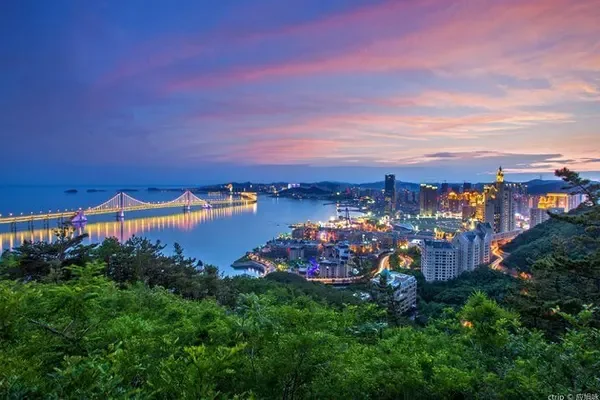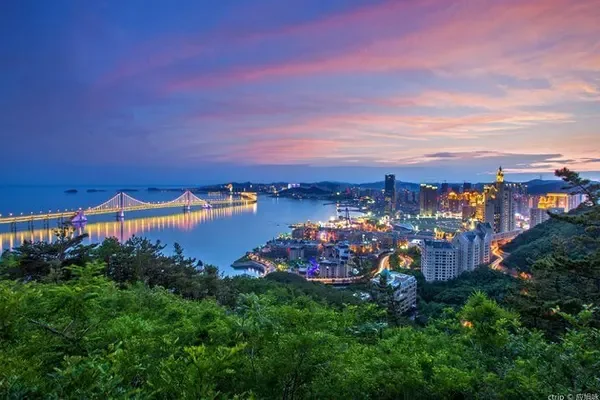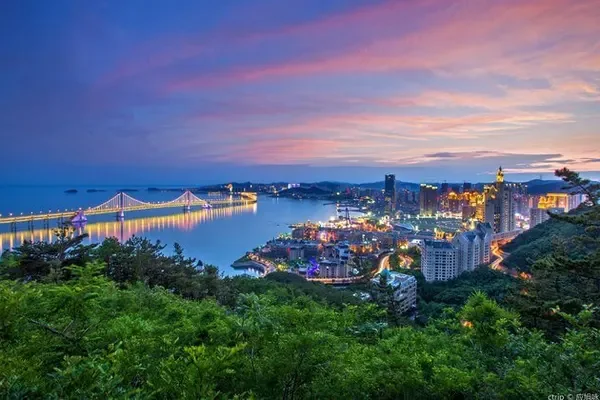Urumqi, the capital of Xinjiang Uygur Autonomous Region, is the city farthest from the ocean in the world. Located in the central part of Xinjiang, at the northern foot of the Tianshan Mountains, it is known as the "Capital of the Heart of Asia".
Although it is more than 3,600 kilometers away from my Jiangnan, and it takes more than five hours to fly, the beloved land in Xinjiang always has a kind of magic that attracts me to arrive again and again.
At the end of November 2019, I came to Urumqi again. This is my 18th time here, and I am also very surprised.
On the plane from Shanghai to Urumqi, I was always reluctant to sleep. The majestic snow-capped mountains outside the window made me admire the great rivers and mountains of the motherland.
The city of Urumqi, as the first stop of Xinjiang travel, gradually began to no longer be unfamiliar. Like an old friend, waiting for my return.
If you are going to Xinjiang for the first time and arriving in Urumqi for the first time, you can go to Hongshan Park in the urban area once like me, and stand on the top of the mountain to overlook the city.
Here are a few more places for your reference. Calculate the distance with Urumqi Station as the center.
Distance 15 kilometers: Xinjiang International Grand Bazaar
Six years ago, in 2013, I came to Xinjiang for the first time. When I came to Urumqi, I went to the International Grand Bazaar, which had just been completed at that time. Later, I would come to Xinjiang three or four times a year, but I had never been there.
This trip, because I had dinner at the Erdaoqiao Grand Theater in Urumqi, which is very close to there, I took the time to go shopping. I found that the changes here are really too big!
If you are coming to Xinjiang for the first time, you still have to come to the International Grand Bazaar to feel the strong customs of the Western Regions.
Bazaar, which means bazaar and farmer's market, is the largest grand bazaar in the world, integrating Islamic culture, architecture, ethnic commerce, entertainment, and catering.
These "windows of Xinjiang", "windows of Central Asia" and "windows of the world" recreate the prosperity of the ancient Silk Road and embody the rich ethnic characteristics and regional culture of the Western Regions.
There are all kinds of goods in Xinjiang International Grand Bazaar, which is really dazzling. Crafts, clothing, food, you can buy them all here.
The uncle who sells dombra is playing and singing in front of the shop; the guy who sells raisins, handed you instant Xinjiang raisins... In the market, I linger on these handmade products, only lamenting that my suitcase is too small.
I bought a hat and bargained with the boss for a price. The boss was very patient. After checking it, it was cheaper than the same model from a certain treasure.
The Xinjiang International Grand Bazaar covers an area of 100,000 square meters. Visiting the Grand Bazaar is very time-consuming.
The International Grand Bazaar is composed of six building groups, using earthy yellow as the main color, and integrating architectural elements of Greece, ancient Rome, West Asia and Central Asia. It is one of the landmark buildings in Urumqi.
In the Grand Bazar, you will see piles of dried fruits, and there are more than a dozen varieties of grapes alone. You can sigh that Xinjiang is vast and rich in resources.
There are also Grand Bazaar Pedestrian Street, Grand Bazaar Food Street... If you are tired from shopping, it is also a good choice to eat some local food.
Tickets: Free
Distance 7 kilometers: Xinjiang Museum
If you want to know a place, it is a good way to choose to go to the local museum.
The Xinjiang Museum is a provincial-level comprehensive topography museum, a national 4A-level tourist attraction, and was named a national first-class museum by the State Administration of Cultural Heritage. With your ID card, you can visit for free.
When you go to a museum, you must listen to the explanation.
If the time is right, you can listen to the free volunteer explanation and follow the volunteer sister all the way. There is also an electronic explainer at the door, but I always feel that listening to the explainer is more vivid.
The exquisite collection of the Xinjiang Museum is the female corpse of Loulan. There is a separate exhibition hall - the dead are more than a thousand years old, and the ancient gan shi in Xinjiang is displayed.
The residents of Loulan in Lop Nur, the cemetery where thousands of coffins are buried in Xiaohe, the campers wearing masks of the amount of money, the painted masks of Zakunluke, the owner of the underground palace in Astana, the sarcophagus tomb of the Altay stone man...
Looking at the Xiaohe cemetery female gan shi, the skin, the hair, the fabric...it's hard to see that she lived 3800 years ago. But I didn't dare to take pictures, because I was afraid that I would frighten myself by turning over my phone in the middle of the night.
Xinjiang's presence on the ancient Silk Road is of great significance. Looking at the map of the ancient Silk Road, I suddenly found that my travels over the years have run through the entire Silk Road.
After listening to the explanation, go to another exhibition hall: Memory of Western Region Clothing. This exhibition hall displays a lot of Western Region clothing, which is very exquisite.
In the exhibition hall of ethnic customs in Xinjiang, the folk customs of 12 ethnic groups including Uyghur, Kazak, Hui, and Kirgiz are displayed through wax figures and restoration of ethnic life scenes.
Tickets: Free
Distance 50 kilometers: Silk Road International Resort
If you come to Urumqi in winter, if you like skiing, then use one day, go here!
Xinjiang Silk Road International Resort is located in the inverse temperate ecological valley on the north slope of Tianshan Mountain, with an altitude of 1800-3200 meters, and is a national AAAA-level scenic spot.
With an area of 1.7 million square meters of ski trails, it is the largest ski resort in China. The point is, skiing here is not cold at all.
How can you not go skiing in winter?
Whether you are a beginner or an expert skier, here, you can always find your own slide. It has the first place (Xuanzang Avenue), the second place (Aiwen Avenue) and the fourth place (Extraordinary Road) for the most challenging ski trails in China.
I once took the cable car to see Aven Avenue, and just looking at it made my legs weak with fright.
Xinjiang Silk Road International Resort has multiple cable cars at the same time, with a capacity of 9,000 people per hour.
There is also a ski sightseeing high-speed cable car with the longest distance and the largest altitude difference in China's ski resorts. If you don't ski, it's also great to take the cable car to the top of the mountain to see the snow scenery.
There is a lounge on the top of the mountain, you can order a cup of coffee or tea, the sun is shining warmly, it feels good.
Looking at the figures of ski masters, I am really envious. That day I skated all afternoon on the primary track, and I don't know how many falls I fell.
Skiing here is so warm that you can take off your coat. I saw a brother skiing in a sweater. This is the warmest ski resort I have ever met.
Ski price:
Ordinary ski trail: ski ticket + snowboard: 100 yuan for 4 hours, 140 yuan for the day course, 120 yuan for the night course
Alpine ski trail: ski ticket + snowboard: 200 yuan for 4 hours, 280 yuan for the day course, 180 yuan for the night course
Distance 19 kilometers: Nang Cultural Industry Park
The average daily production of naan is 50,000! Do you believe? Since I went to the Naan Cultural Industry Park in Urumqi, I am really impressed by this little naan!
Nang is one of the main pasta favorites of all ethnic groups in Xinjiang, with a history of more than two thousand years.
How domineering is the "No. 1 Nang in the World" at the gate of Nang Culture Industrial Park in Urumqi! As soon as you enter the door, it is a "nang culture museum". From the historical origin of nang, there is a lot of knowledge.
There are many varieties of naan, about fifty. The common ones are meat naan, oil naan, wowo naan, sesame naan, sliced naan, Hillman naan and so on.
"In 1972, archaeologists discovered a small naan more than 1,000 years ago in the ancient tomb of Astana in Turpan. The naan was only 3.9 cm in diameter, made of white flour, with dried nuts on the surface, and was quite well preserved. "
Listening to the commentator's explanation, it turns out that this small naan has such a long history!
The park is divided into five major areas: cultural display area, production visit area, leisure experience area, special product exhibition area, and leisure and food corridor.
Here, you can watch how the naan is made live, and you can also buy hot naan just out of the oven.
There are eight local well-known naan production enterprises in Xinjiang, and eleven food production enterprises with Xinjiang characteristics, including dairy products, pastries, dried fruits, kvass, pepper chicken, roasted whole lamb and other special foods. An excellent place for souvenirs.
The music sounded, and a wonderful performance began. The girls danced gracefully and had a graceful figure, which was very seductive.
Based on Nang culture, it integrates industry, tourism, culture, catering, shopping, leisure and entertainment, singing and dancing. It is really a small naan, a big industry!
Tickets: Free
Distance 80 kilometers: Dabancheng Guhya Salt Lake
"This will definitely be the next hottest salt lake check-in place in China. Not far from Urumqi, this is Guhya Salt Lake in Dabancheng."
I wrote it in the circle of friends. This salt lake is definitely an unexpected encounter during this trip.
Speaking of Dabancheng, Mr. Wang Luobin's "Girl in Dabancheng" is the cheerful tune that rings in my ears.
It was a cloudy day with no sunshine. But because of this, Guhya Salt Lake in Dabancheng shows us the beautiful side of ink painting.
Here is known as the "Maldives of Xinjiang", the white salt lake reflects the sky, a touch of sad blue. Fortunately, there was no wind in Dabancheng that day, and the water was calm.
With a water area of 37 square kilometers and a diameter of about 4 kilometers, the salt lake is a typical inland saltwater lake. The lake water contains a large amount of sodium chloride and the salt content is extremely high.
On the salt lake, a lonely boat and a retro car became the focus of sight.
It's full of salt, and there's a mountain of salt.
Guhya (古海雅) Salt Lake Tourist Ecological Scenic Spot also means "mysterious salt lake". The salt lake is formed by melting ice and snow on Bogda Peak at an altitude of 5,445 meters, seeping into the lake from more than 2,000 springs.
If it is summer, you can also lie on the salt lake, because of the high salt content, it will not sink.
This mirror of the sky, it feels really good to book the venue. Wearing a red cloak, I feel like I have stepped into the painting.
Scenic spot ticket: 45 yuan
Distance 50 kilometers: Leisure town
Xinjiang also has "Kuanzhai Alley", which is a small town in Xianlai.
Xianlai Town is the first "leisure" cultural tourism commercial theme resort in Xinjiang, integrating "eating, shopping, living and traveling". Moreover, this "wide and narrow alley" is indoors, so you are not afraid of it in winter!
On the food street in Xianlai Town, there are all kinds of Xinjiang delicacies, all in one go. You can choose to have dinner here after skiing at the Silk Road International Ski Resort.
Freshly baked naan, fragrant sauced beef bones, pot meat, smoked horse intestines... Every small shop here has its own characteristics, and many locals eat here.
Come to the town leisurely, how to come here leisurely, suitable for starting the small train mode of shopping and eating, from Urumqi's "slow life".
Tickets: Free
In fact, there are many places to visit around Urumqi according to different seasons, such as the famous Tianshan Mountain and Tianshan Grand Canyon.
What other interesting things are waiting for you to add!
Hi. I am thoughtful, like photography and travel, follow me, and walk with you to see this beautiful world.



